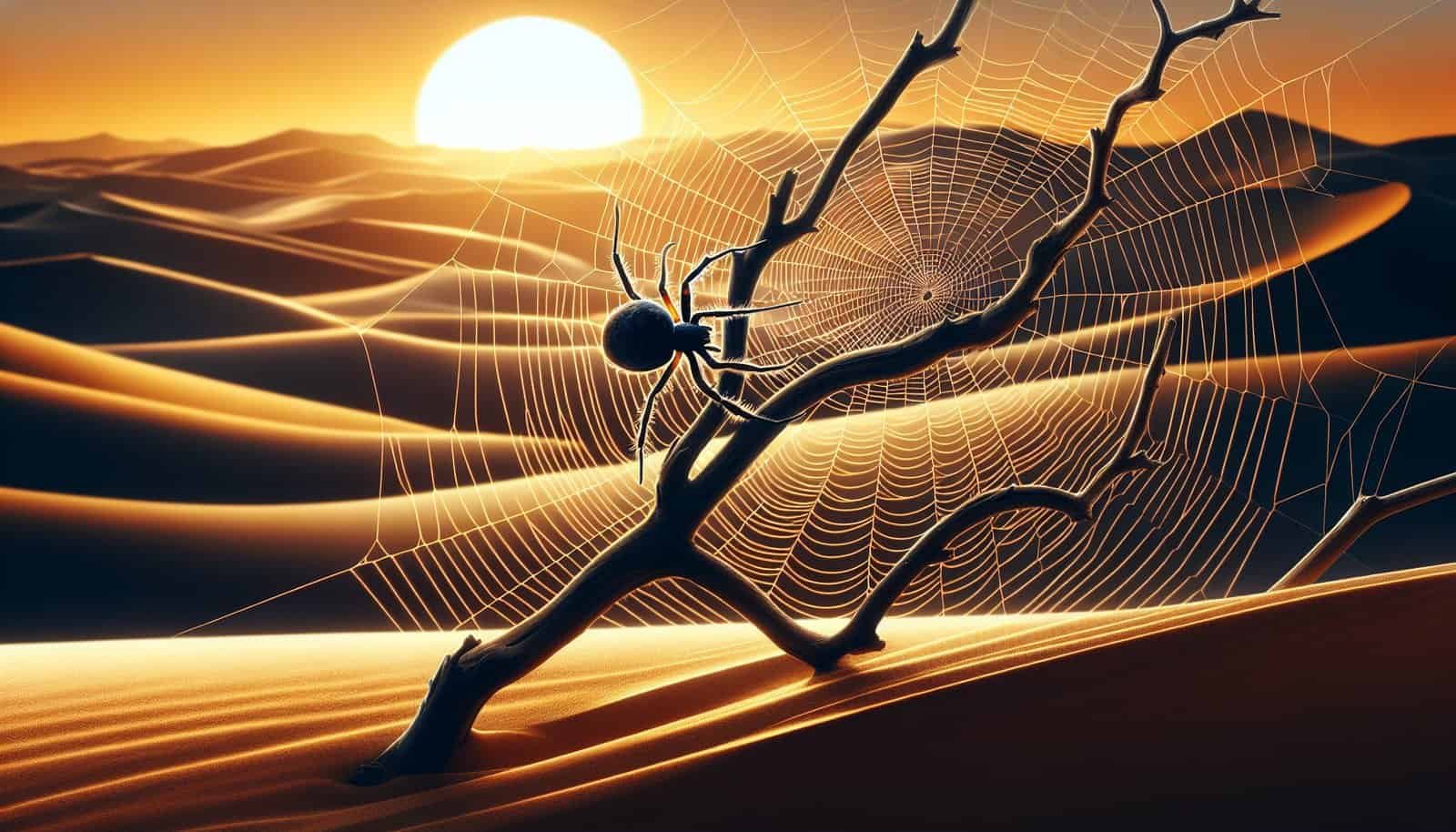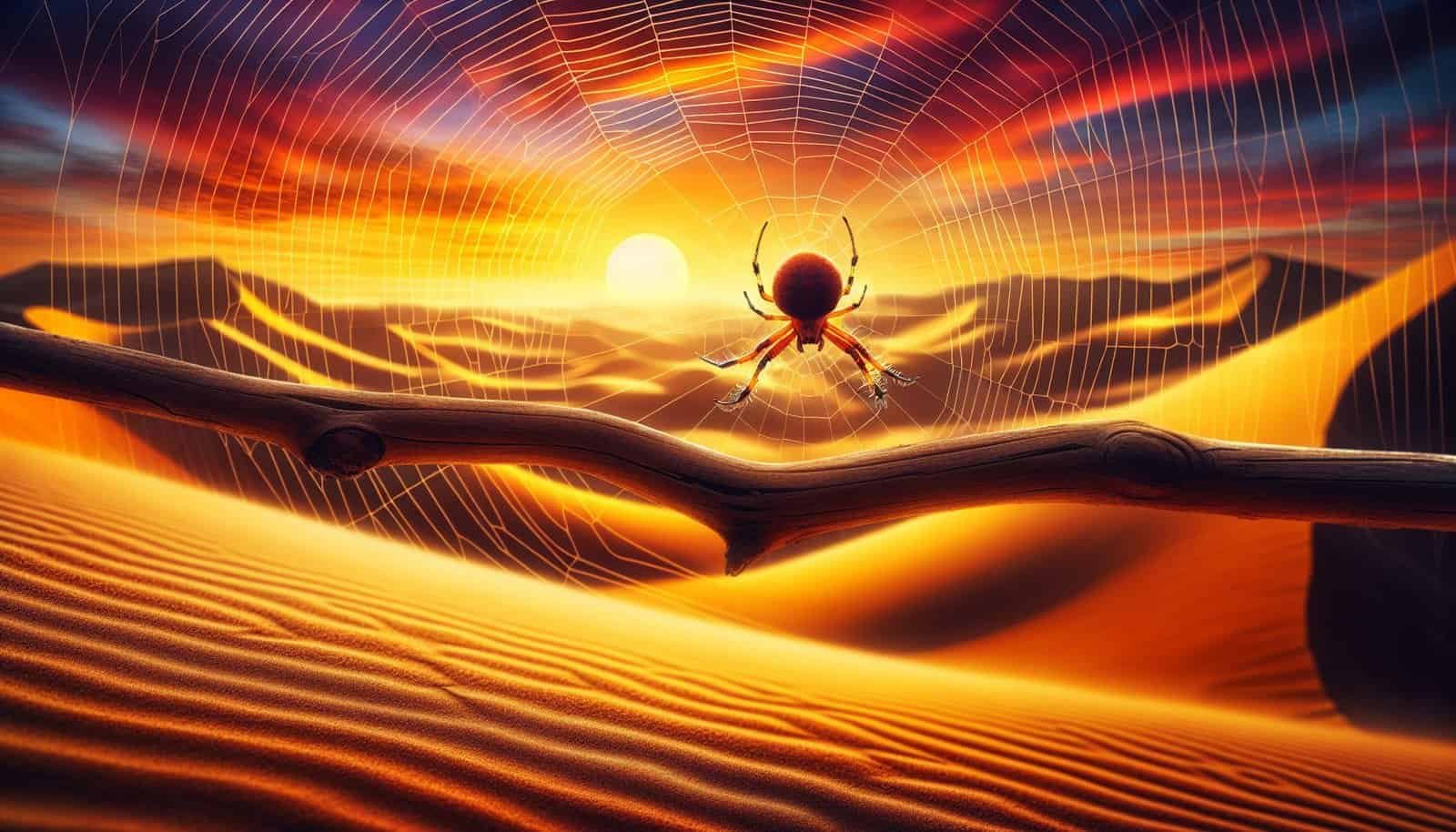Looking to add some fascinating creatures to your collection? If you’re intrigued by the world of spiders and have a penchant for desert-dwelling species, you’ve come to the right place. In this article, we will explore a selection of desert-dwelling spider species that are well-suited to captivity. From their unique adaptations to their captivating behaviors, these arachnids are sure to bring excitement and intrigue to your home. So, whether you’re a seasoned spider enthusiast or simply curious about these eight-legged wonders, read on to discover which desert-dwelling spiders may be the perfect fit for your captive environment.

Desert Spider Species Suitable for Captivity
If you are someone who loves spiders or is fascinated by their unique adaptations, then you might be considering keeping one as a pet. While there are numerous spider species found in desert regions, not all of them are suitable for captivity. In this article, we will explore various desert spider species that can be safely kept in captivity, allowing you to enjoy their beauty and observe their intriguing behaviors up close.
Tarantulas
Tarantulas are known for their impressive size and striking appearance, making them a popular choice among spider enthusiasts. These docile creatures are typically low-maintenance and can adapt well to artificial environments. Here are a few tarantula species found in desert regions that are suitable for captivity:
Mexican Redknee Tarantula
The Mexican Redknee Tarantula is one of the most recognizable and sought-after tarantulas in the exotic pet trade. With its velvety black body adorned with bright red knees, it is certainly an eye-catching species. This tarantula prefers dry desert habitats and can be easily kept in an enclosure with proper ventilation and a sandy substrate.
Chilean Rose Tarantula
The Chilean Rose Tarantula, also known as the Chilean Flame Tarantula, is another popular desert-dwelling species suitable for captivity. Known for its calm demeanor and stunning rose-pink coloration, this tarantula is relatively easy to care for. It requires a spacious enclosure with hiding spots and a temperature gradient to mimic its natural habitat.
Arizona Blonde Tarantula
The Arizona Blonde Tarantula is a beautiful species native to the desert regions of the southwestern United States. As its name suggests, it has a golden-brown, almost blonde, appearance. This tarantula is known for its docile nature and can be kept in a simple setup with minimal requirements, making it an excellent choice for beginners.
Wolf Spiders
Wolf spiders are known for their exceptional hunting abilities and unique maternal behavior. These agile creatures are usually found in deserts and other arid regions. Here are a few wolf spider species suitable for captivity:
Carolina Wolf Spider
The Carolina Wolf Spider is a large, robust species known for its swift movements and impressive speed. It showcases intricate patterns on its body, making it a visually appealing choice for spider enthusiasts. Carolina Wolf Spiders thrive in arid habitats, so it is essential to recreate a desert-like environment in their enclosure.
Arabian Wolf Spider
The Arabian Wolf Spider is a desert-dwelling species that is native to the Middle East. With its sandy brown color and long, hairy legs, this spider is well adapted to desert life. Arabian Wolf Spiders are known for their burrowing behavior, so providing them with a substrate that allows digging is crucial when keeping them in captivity.
Tiger Wolf Spider
The Tiger Wolf Spider, also known as the Raft Spider, is revered for its unique appearance, resembling the markings of a tiger. This species is highly adaptable, capable of surviving in both arid and humid environments. Tiger Wolf Spiders are known for their excellent eyesight and nimble hunting techniques, making them an exciting addition to any spider collection.
Sun Spiders
Sun spiders, scientifically known as solifugids, are fascinating creatures often mistaken for spiders or scorpions due to their appearance. Despite their intimidating looks, many species of sun spiders are suitable for captivity. Here are a couple of examples:
Solifugids
Solifugids, commonly referred to as sun spiders or wind scorpions, are known for their impressive speed and voracious appetite. While they may resemble spiders, they are actually a distinct arachnid group. Solifugids are desert dwellers and require a warm, dry enclosure with plenty of space to roam. Their diet usually consists of insects, making them an excellent choice for natural pest control.
Giant Vinegaroon
The Giant Vinegaroon, also known as the Whip Scorpion, is another intriguing species often mistaken for spiders or scorpions. Despite its intimidating pincers and elongated tail, this arachnid is relatively harmless and makes for an unusual pet. Giant Vinegaroons require a well-ventilated enclosure with a sandy substrate and plenty of hiding spots to feel secure.

Sand Spiders
Sand spiders encompass a group of species that are specifically adapted to sandy environments, such as deserts. These spiders have unique adaptations that allow them to thrive in such harsh conditions. Here are a couple of sand spider species suitable for captivity:
Six-eyed Sand Spider
The Six-eyed Sand Spider is a fascinating species known for its remarkable burrowing abilities. With its sandy coloration and well-developed eyes, it is well adapted to life in the desert. Six-eyed Sand Spiders require an enclosure with a deep substrate to support their burrowing behavior, and maintaining a warm, dry environment is crucial for their well-being.
Desert Recluse Spider
The Desert Recluse Spider, also known as the Arizona Recluse Spider, is a venomous species found in desert regions of North America. While their venom can be medically significant, some experienced spider keepers may choose to keep them in captivity. It is essential to exercise caution when handling and providing a secure enclosure for this species.
Trapdoor Spiders
Trapdoor spiders are known for their unique burrowing behavior and the creation of elaborate trapdoor entrances to their underground homes. While they may not be as well-known as tarantulas and other spider species, trapdoor spiders can be fascinating pets. Here are a couple of trapdoor spider species suitable for captivity:
California Trapdoor Spider
The California Trapdoor Spider is a native species found along the West Coast of the United States. With its brownish coloration and exquisite silk-lined burrows, it is an interesting addition to any spider collection. California Trapdoor Spiders prefer a slightly moist substrate and should be provided with a secure hiding spot to mimic their natural burrows.
Arizona Desert Blond Trapdoor Spider
The Arizona Desert Blond Trapdoor Spider is a desert-dwelling species known for its striking blonde coloration. These spiders construct burrows with camouflaged trapdoors and remain hidden most of the time. Providing a suitable substrate and ensuring proper humidity levels are crucial when keeping this species in captivity.

Camel Spiders
Camel spiders, also known as wind scorpions, are fascinating arachnids found in desert regions across the world. Despite their intimidating appearance, many camel spider species can be kept in captivity with proper care. Here are a couple of camel spider species suitable for captivity:
Wandering Spider
The Wandering Spider, also known as the Sun Spider or Wind Scorpion, is a speedy creature well adapted to desert life. With its distinctive comb-like mouthparts and elongated legs, it is an intriguing addition to any spider collection. Wandering Spiders require a spacious enclosure with hiding spots and a warm, dry environment to thrive.
Giant Hairy Desert Scorpion
The Giant Hairy Desert Scorpion is a robust, nocturnal species found in desert regions. It is sometimes mistakenly referred to as a spider due to its appearance. These scorpion spiders have impressive pincers and a venomous sting, but their overall venom potency is relatively low. Maintaining a warm, arid environment with a sandy substrate is essential for their well-being.
Scorpion Spiders
Scorpion spiders belong to the family Palpimanidae, known for their resemblance to both spiders and scorpions. These arachnids are found in various desert regions and can make intriguing pets for spider enthusiasts. Here are a couple scorpion spider species suitable for captivity:
Dune Scorpion Spider
The Dune Scorpion Spider, also known as the Sand Scorpion Spider, is a unique species that can be found in desert habitats. With its pale coloration and elongated body, it bears a resemblance to its scorpion cousins. Dune Scorpion Spiders require a sandy substrate and a well-ventilated enclosure to thrive in captivity.
North African Scorpion Spider
The North African Scorpion Spider, also known as the Mediterranean Scorpion Spider, is a fascinating species found in desert regions of North Africa. It possesses scorpion-like pedipalps, which it uses to capture prey. North African Scorpion Spiders require a spacious enclosure with hiding spots and a temperature gradient to mimic their natural habitat.

Jumping Spiders
Jumping spiders are known for their incredible agility and their ability to pounce on their prey with remarkable precision. These small, colorful spiders can be great pets, and there are desert-dwelling species suitable for captivity. Here are a few examples:
Bold Jumping Spider
The Bold Jumping Spider, also known as the Daring Jumping Spider, is a colorful and charismatic species found in various habitats, including desert regions. With its bold black and white markings, it is easy to distinguish from other jumping spider species. Bold Jumping Spiders require a well-lit enclosure with plenty of climbing opportunities to satisfy their energetic nature.
Fringed Jumping Spider
The Fringed Jumping Spider, also known as the Red-fanged Jumping Spider, is another fascinating species suitable for captivity. These spiders exhibit vibrant colors and distinctive fringed legs, making them quite attractive. Fringed Jumping Spiders require a small enclosure with plenty of vertical surfaces for them to climb and explore.
Regal Jumping Spider
The Regal Jumping Spider, scientifically known as Phidippus regius, is a striking species known for its iridescent green and black coloration. With their charming personalities and impressive jumping abilities, Regal Jumping Spiders can be a delight to observe in captivity. They require a spacious enclosure with plenty of hiding spots and opportunities for climbing.
Orb-weaver Spiders
Orb-weaver spiders are known for their intricate web-building skills and ornate patterns, making them particularly captivating to observe. While many orb-weaver species are found in a variety of habitats, some can thrive in desert regions. Here are a few examples of orb-weaver spiders suitable for captivity:
Giant Wood Spider
The Giant Wood Spider, also known as the Golden Silk Orb-weaver, is a magnificent species known for its large size and golden silk webs. These spiders are commonly found in forested areas but can adapt to desert-like conditions as well. Giant Wood Spiders require a spacious and well-ventilated enclosure with a sturdy structure to support their elaborate webs.
Golden Silk Orb-weaver Spider
The Golden Silk Orb-weaver Spider, also known as the Banana Spider, is renowned for its impressive circular webs adorned with golden silk threads. These spiders are highly adaptable and can thrive in diverse environments, including desert regions. Providing a suitable enclosure with ample space and vertical surfaces for web-building is essential for their well-being.
Silver Orb-weaver Spider
The Silver Orb-weaver Spider, also known as the Garden Spider, is a common species found in various habitats, including desert regions. Known for its large size and beautiful silver coloration, these spiders create intricate orb-shaped webs. Silver Orb-weaver Spiders require a well-ventilated enclosure with climbing opportunities and a spacious area for web construction.
In conclusion, there are numerous desert-dwelling spider species suitable for captivity, allowing spider enthusiasts to appreciate their beauty and observe their fascinating behaviors up close. From the docile tarantulas and agile wolf spiders to the unique sun spiders and trapdoor spiders, there is a diverse range of options to choose from. Whether you prefer the vibrant colors of jumping spiders or the intricate web-building skills of orb-weaver spiders, each species offers a unique glimpse into the fascinating world of desert-dwelling spiders. Remember, always research the specific care requirements of each species before deciding to keep them as pets to ensure their well-being in captivity.

